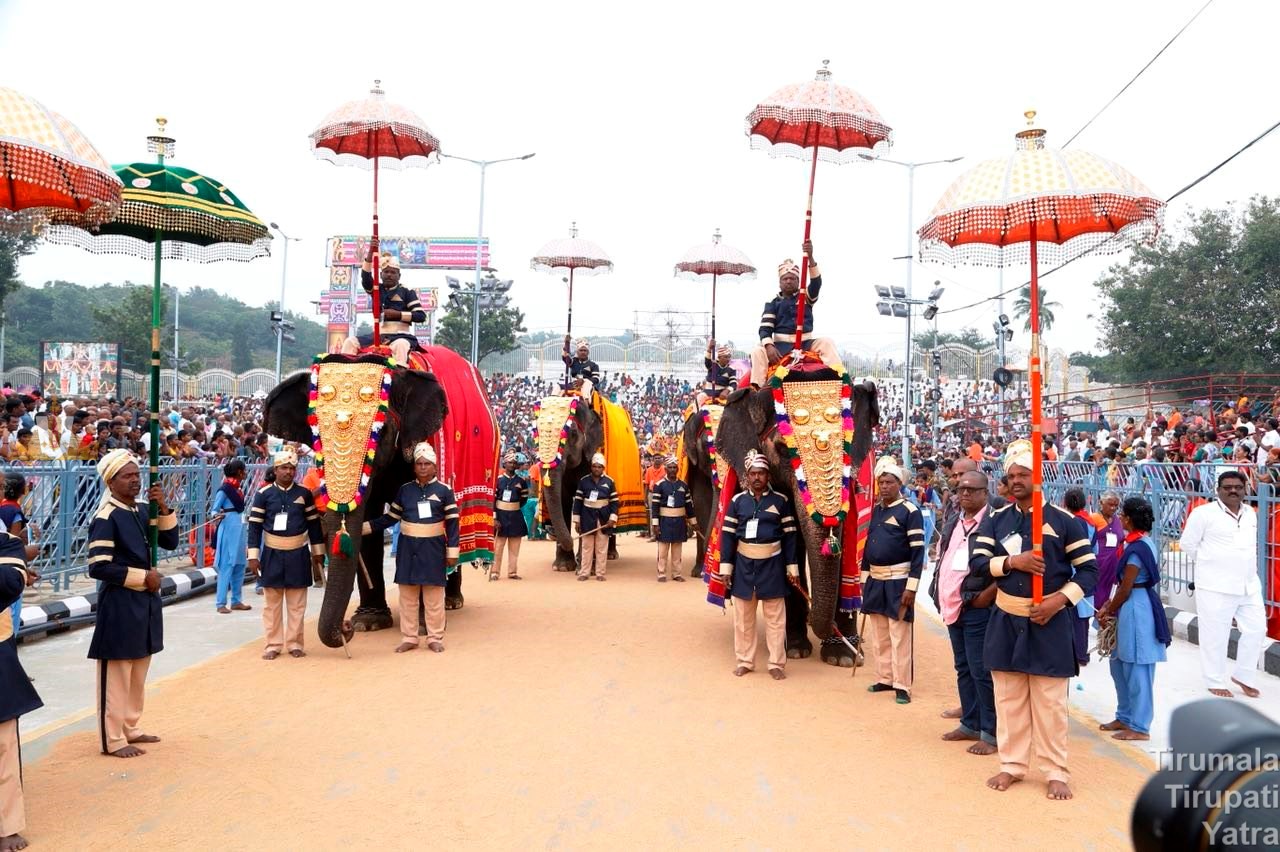Brahmotsavam
Brahma the creator, with the sun then transiting Virgo (Kanya), the month of Aswayuja as per the Chandramana (the Lunar Calender), fixing Avabhritha (Chakrasnana or the holy dip of the disc) in star sravana, the star of Srimannarayana’s incarnation, having invited divine sages like Vaikhanasa, Bhrigu, and Maricha, as its priests (ritviks), on Suklapaksha vidiya in Hastha nakshathra, with a preceding Dhwajarohana, celebrated the great festival for nine days.
That was the foundation of today’s Brahmotsava.
To prove this and to remind us of the festive day and Sravana, the star of the nativity of the incarnation of Sri Venkateswara, the festival initiated by Brahma, is being celebrated even to date, fixing the Avabritha on a day with star Sravana in the month of Kanya.
Tarigonda Vengamamba describes the details of Brahmotsava in her Venkatachala Mahatmyam, (2-120) thus:
When the Sun transits Virgo and the star is Chitta, Dhwajarohana;
when the star is Uttarashadha, Rathotsava (the car festival); and
when the star is Sravana, Chakrasnana must be performed.
As per the Vedic saying “ritagam satyam parabrahma, ekameva adwitiyam Brahma, Narayanam parabrahma” the Para Brahman is no other than the one who is called Narayana.
The Brahmotsavam is the great festival performed for that para brahman. As this festival is initiated by Brahma, it is called Brahmotsavam.
To show that even to date the Brahmotsavas of Lord Venkateswara is performed under the leadership of Brahma, the chariots either during the day or night, follow a small chariot, gorgeously decorated, the Brahmaratha. Brahma of no shape, no guna, ascends and conducts the festival.
But on the day of Rathotsava, there will be no Brahmaratha in front as Sri Venkateswara is the adorable incarnation of para Brahman.
So on the day of the car festival of the Lord, Brahma himself takes part as the charioteer and invisible to others, holds the reins and drives the chariot of Lord Venkateswara.

